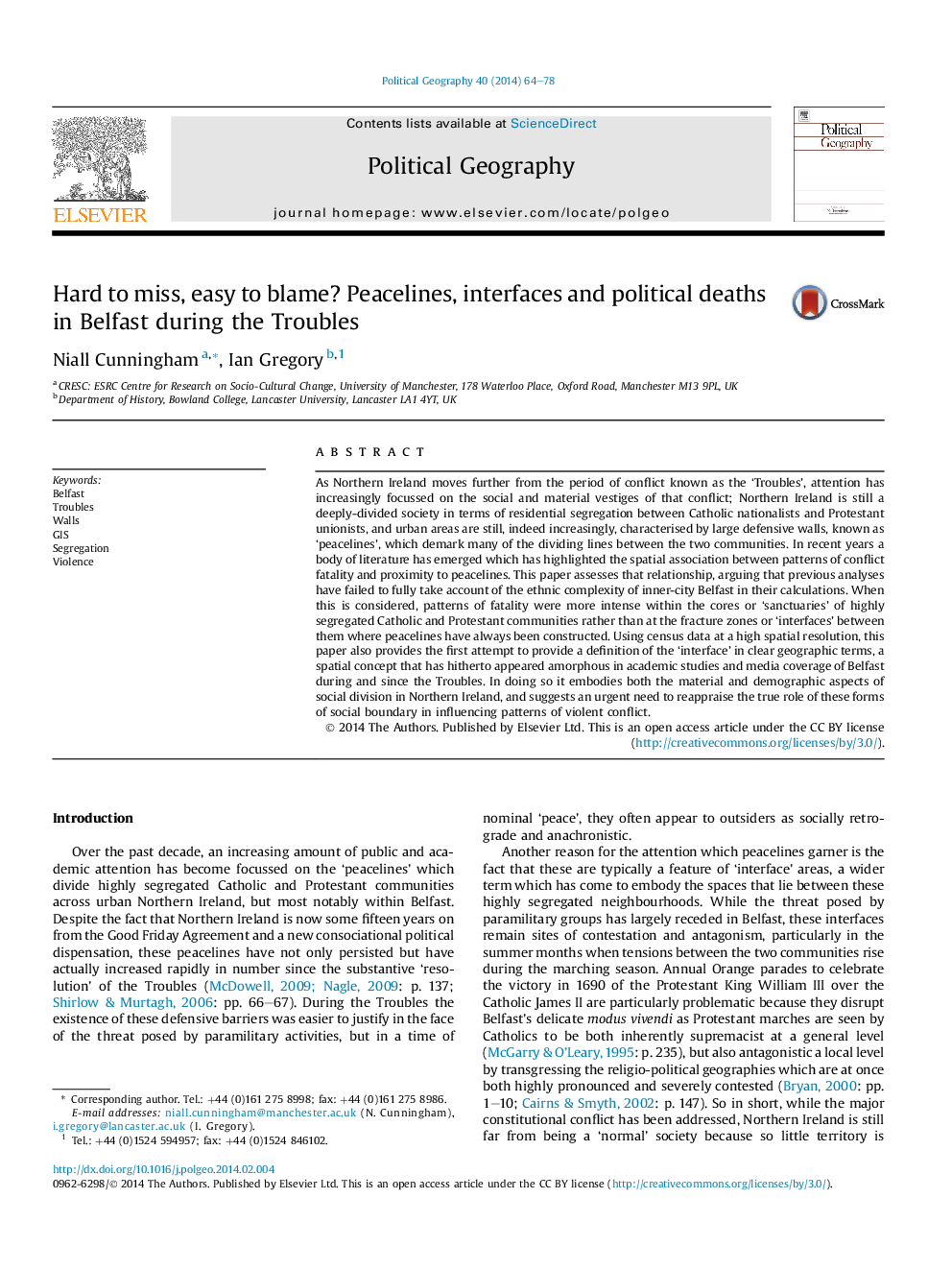| Article ID | Journal | Published Year | Pages | File Type |
|---|---|---|---|---|
| 7493534 | Political Geography | 2014 | 15 Pages |
Abstract
As Northern Ireland moves further from the period of conflict known as the 'Troubles', attention has increasingly focussed on the social and material vestiges of that conflict; Northern Ireland is still a deeply-divided society in terms of residential segregation between Catholic nationalists and Protestant unionists, and urban areas are still, indeed increasingly, characterised by large defensive walls, known as 'peacelines', which demark many of the dividing lines between the two communities. In recent years a body of literature has emerged which has highlighted the spatial association between patterns of conflict fatality and proximity to peacelines. This paper assesses that relationship, arguing that previous analyses have failed to fully take account of the ethnic complexity of inner-city Belfast in their calculations. When this is considered, patterns of fatality were more intense within the cores or 'sanctuaries' of highly segregated Catholic and Protestant communities rather than at the fracture zones or 'interfaces' between them where peacelines have always been constructed. Using census data at a high spatial resolution, this paper also provides the first attempt to provide a definition of the 'interface' in clear geographic terms, a spatial concept that has hitherto appeared amorphous in academic studies and media coverage of Belfast during and since the Troubles. In doing so it embodies both the material and demographic aspects of social division in Northern Ireland, and suggests an urgent need to reappraise the true role of these forms of social boundary in influencing patterns of violent conflict.
Related Topics
Social Sciences and Humanities
Arts and Humanities
History
Authors
Niall Cunningham, Ian Gregory,
